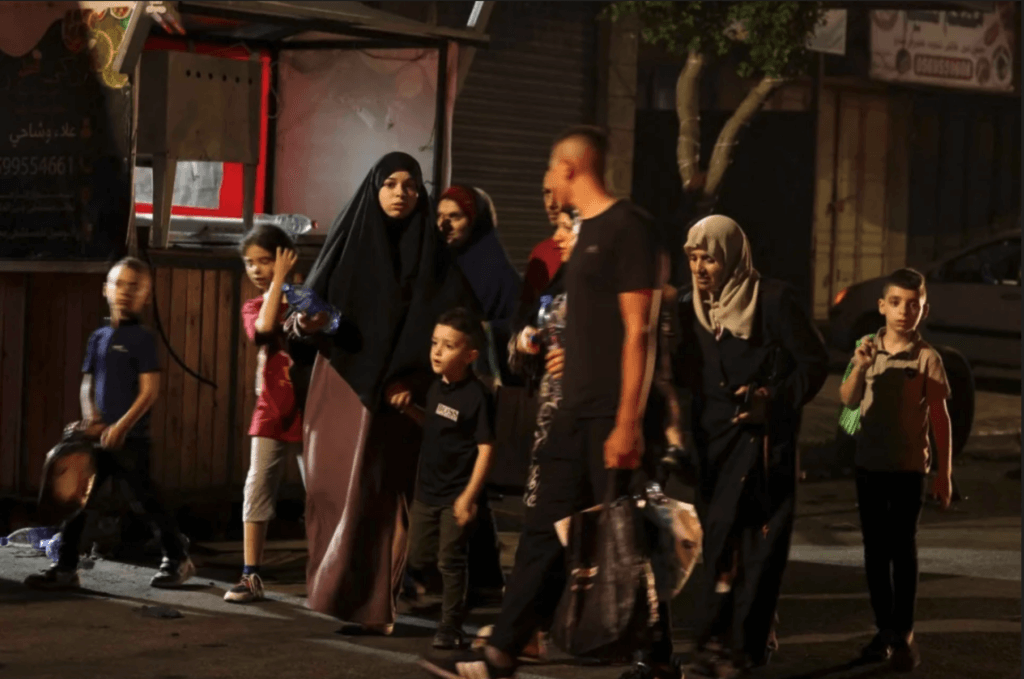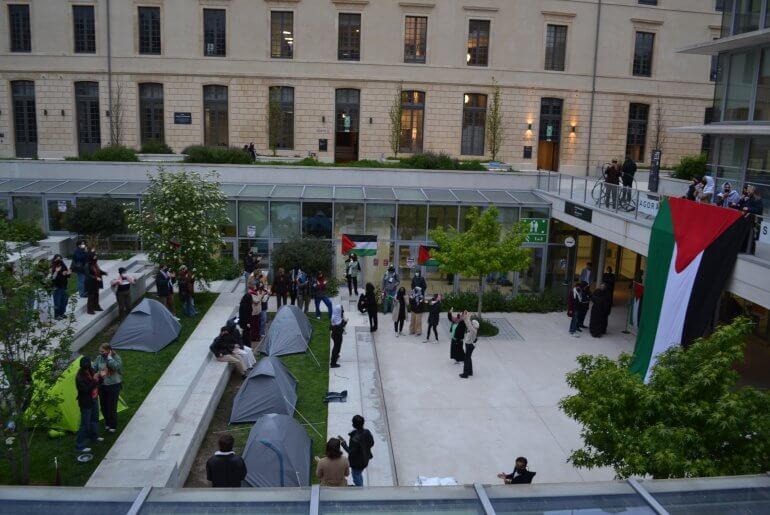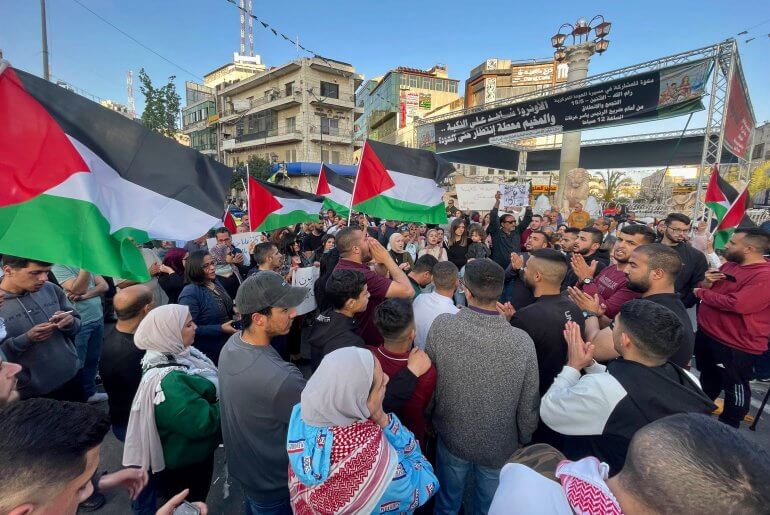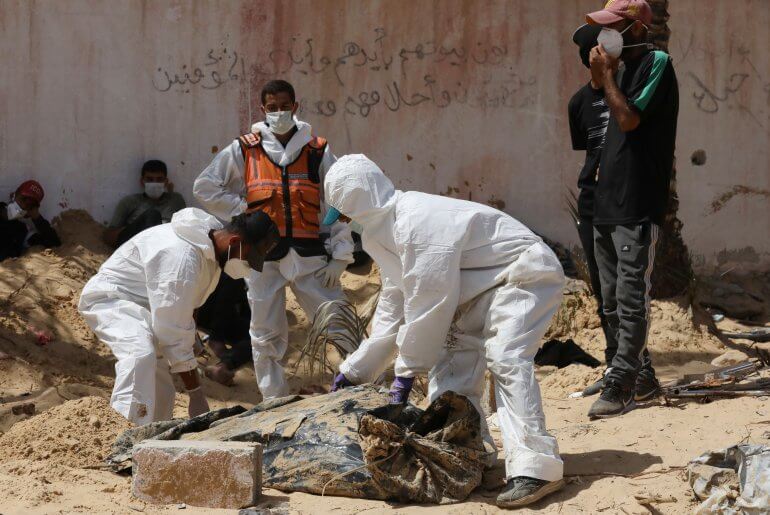At about 1:30 a.m. on July 3, the occupation’s military drones launched an airstrike on one of the sites of the Palestinian resistance in Jenin refugee camp.
I quickly put on my PRESS jacket and headed to the camp where the airstrike occurred. On my way to the camp five kilometers away, news began to reach us that the occupation’s military forces had left the military bases at the Dotan, Jalameh, and Salem military checkpoints surrounding Jenin. They were about to roll into the city.
At that moment, I knew that the invasion had begun.
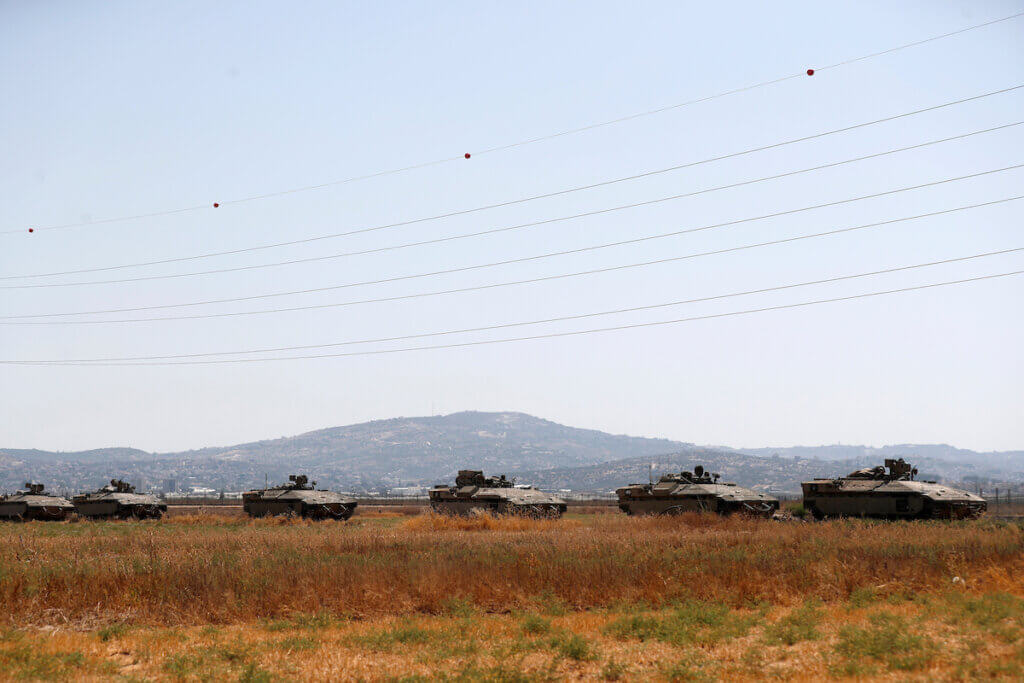
When I arrived at the camp, the army was already there, stationed outside the western entrance by the Awda Circle. Dozens of armored vehicles streamed in, spreading out and making a ring around the camp perimeter.
We began covering the invasion as the army pushed inwards. This time felt different from previous invasions — the army was making liberal use of military drones to launch airstrikes on several locations inside the camp, something that had not been seen since the Second Intifada. The explosions continued for several hours as the army continued pummeling the camp from on high. After a while, the explosions became less frequent, to be replaced by a different, more familiar sound of locally-made IEDs being set off.
We tried to enter to continue our coverage, but the army prevented our advance. It also prevented ambulances and medical personnel from entering to treat the wounded.
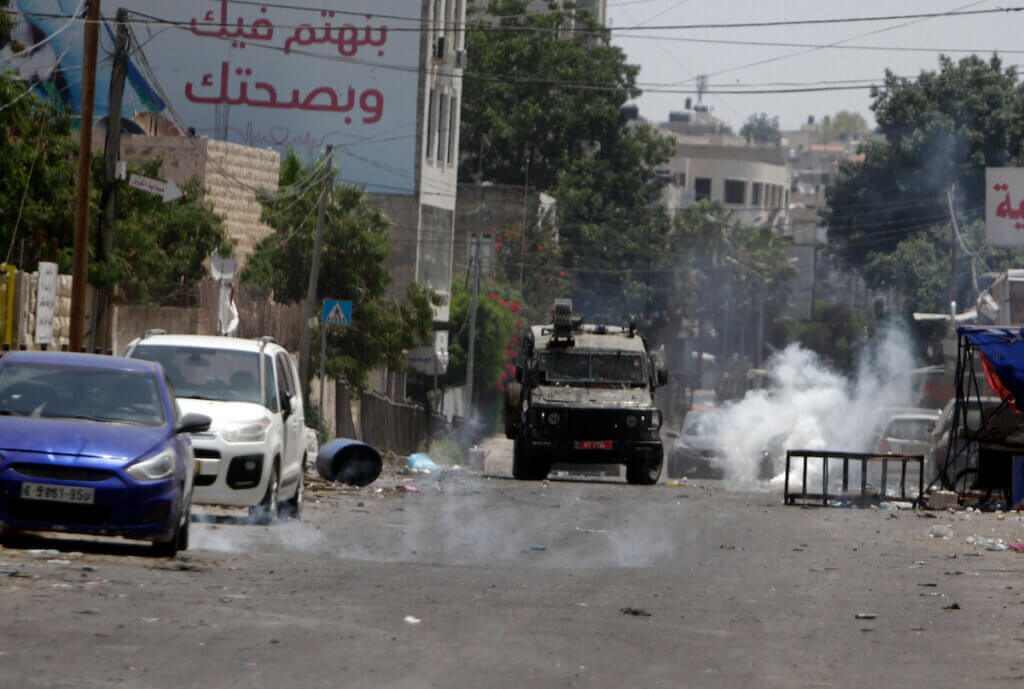
We went to Ibn Sina Hospital in Jenin and witnessed the gradual influx of people, many of them either wounded or seeking refuge. We noticed dozens more army vehicles continuing to pass by the hospital, as over five convoys, including four D9 military bulldozers, made their way toward the camp.
Hours passed, and the sound of the explosions emanated from the camp. We began to document the cases of the injured and the killed that began to reach the hospital. Ambulances arrived on the scene after having been hindered by the occupation forces from treating the wounded.
By early morning, the bulldozers began to tear up the streets of Jenin, digging trenches into the ground that reached one meter deep. It was the first time we saw these bulldozers in action in twenty years.

As the sun rose, we saw the military drones fill the sky above us, signaling that the invasion would likely continue for some time. We started towards several locations throughout the day where the army was stationed. The first site was on Haifa Street, where many military vehicles were stationed. The second site was by the Ministry of Interior’s roundabout, where a convoy of armored vehicles was making a perimeter around the area to secure the roads leading to the camp. The third site was at the Cinema Circle in downtown Jenin, where armed confrontations were taking place between the army and the resistance fighters. Fighters stood on the sides of streets and exchanged fire with the army. At some point in the fighting, a large group of resistance fighters suddenly began to advance toward the middle of the street and continued to fire on the armored vehicles. As we filmed, one of my colleagues turned to me and told me that this reminded him of the pitched street battles of the Second Intifada.
We witnessed the bravery and stoicism of the resistance fighters as they faced off against the occupation, displaying a tenacious resolve that would make you tremble.
These scenes of armed confrontation have been documented before — since the start of the recent events in Jenin refugee camp — but the invasions of the past year are nothing like what we saw with our own eyes. We witnessed the bravery and stoicism of the resistance fighters as they faced off against the occupation, displaying a tenacious resolve that would make you tremble.
Finally, the fourth site was at Jenin refugee camp’s main entrance, where the fighting was thickest. Burning tires filled the streets, and so did the black smoke that billowed in pillars that served as a temporary smokescreen meant to shield the fighters. In mere moments, ambulances could be heard shortly after an airstrike inside the camp, taking scores of the injured to Ibn Sina, where the gathering crowds rushed to assist the medical personnel in transporting the wounded. This is how the people of the camp face these conditions, offering mutual aid regardless of expertise. All they want to do is help out in any way they can.
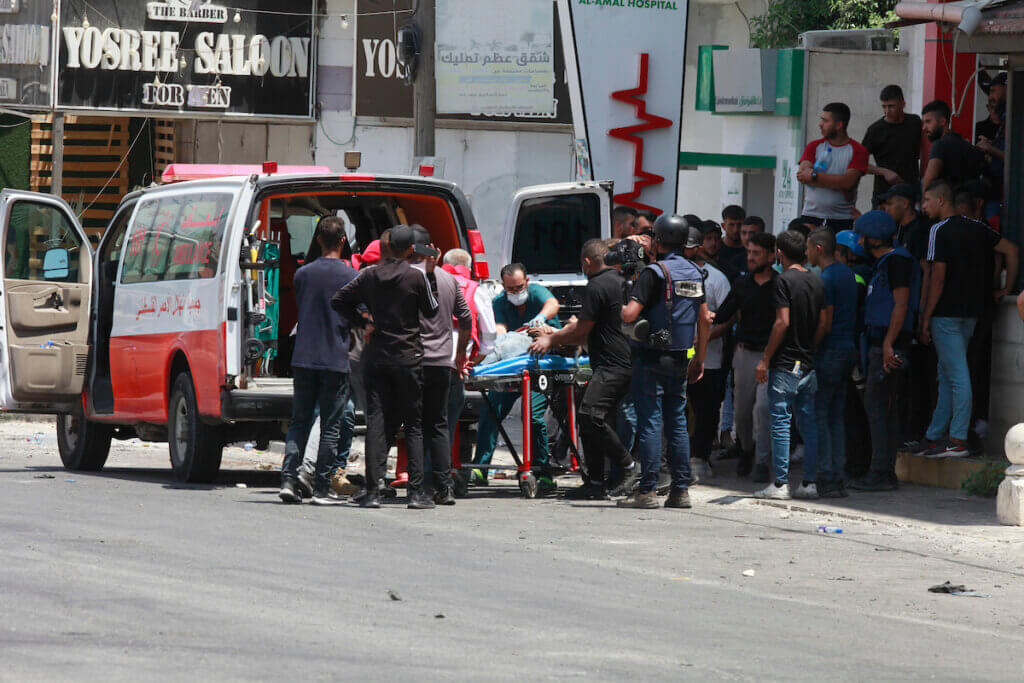
After a brief period, another ambulance rolled in carrying a group of journalists it had evacuated from the camp — they had been covering the events on the ground when the army targeted them with live bullets. None were directly harmed, but some returned without their equipment, as the army deliberately fired on cameras that were broadcasting the events live.
I spoke with one of those journalists, Issam Rimawi:
“I and a number of colleagues — Hisham Abu Shaqrah, Amid Shehadeh, Rabie Munir, and Abdulrahman Younis — were stationed inside the camp before the occupation forces invaded. All of a sudden, the occupation forces were in the middle of the camp during our coverage, and they didn’t allow us to leave, instead opening fire on us. We took cover in one of the houses until we were evacuated by an ambulance. It was such a terrifying sight.”
This is how the situation unfolded in Jenin until nightfall when the army forced thousands of people out of the camp. These families fled because they were told their homes would be bombed, but many stayed in their houses.
“Nothing in the camp has remained like it was before. Everything has been destroyed.”
A resident of Jenin refugee camp
This is what it is to be a refugee. This is the Nakba, reborn of the occupation’s crimes. We were transported back to the same scene that played out in 1948, the same scenes from 1967 and 2002, when the Jenin refugee camp was leveled.
We spoke to the families from the camp. They told us that ambulances came for them and told them that they had to leave their houses because the occupation intended to bomb several of their homes. One of the people described the scale of the destruction they witnessed:
“When we left our homes, the streets were completely destroyed. Signs of devastation were everywhere in the camp, and we walked on top of the rubble from the airstrikes and the bulldozers. Nothing in the camp has remained like it was before. Everything has been destroyed.”
This has been the fate of the people of the camp over the past 24 hours, and perhaps it is the same fate that awaits them in the 24 hours to come. The airstrikes are ongoing, and the fighting has intensified. We can hear more explosions, and their continuation is all but guaranteed.
Mohammed Abed
Mohammed Abed is a Palestinian journalist based in Jenin.
